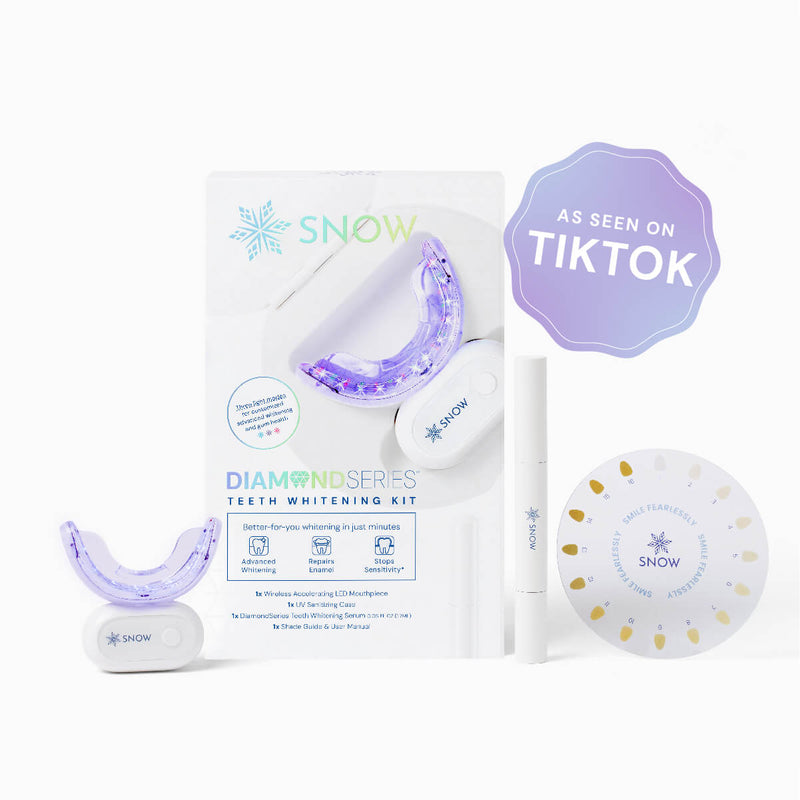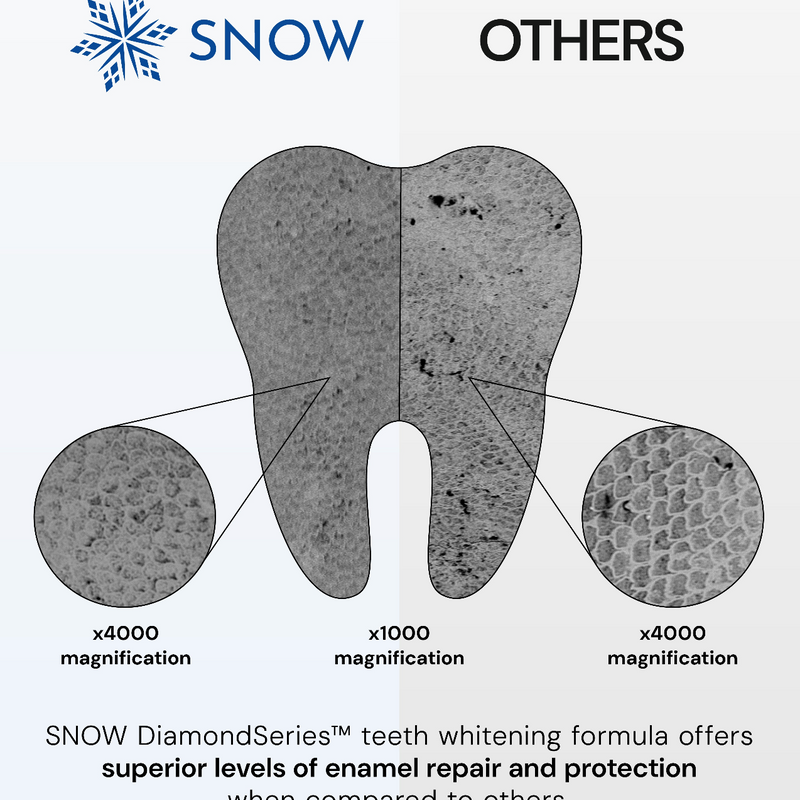A healthy smile, teeth, and gums are all benefits of good oral health. On the other hand, poor dental hygiene and not seeing the dentist regularly can increase your chances of developing rotten tooth problems, also known as a cavity or rotting teeth.
Plaque, a sticky, colorless film that forms over the teeth, can slowly dissolve tooth enamel and cause decay. Plaque contains bacteria, and when these bacteria combine with sugar in foods, they produce an acid that erodes the tooth.
A severely decayed tooth can become loose and fall out, leading to broken teeth or causing pain, tooth abscess, swelling, and other rotten tooth symptoms if left untreated. So, it's critical to recognize the causes and symptoms of a rotten tooth and treat tooth decay appropriately.

WHAT CAUSES ROTTEN TOOTH ISSUES?
"Rotten" is simply another term for severely decayed teeth. Tooth rot is frequently caused by eating sugary or starchy foods and failing to maintain a good oral care routine leading to tooth pain. If your teeth are not cleaned regularly, bacteria build up a layer of sticky plaque on your teeth, gums, and deep dental crevices.
These bacteria use the sugars and starches in your food to produce acids that erode tooth enamel. When the enamel wears away, the bacteria and plaque inside the tooth can attack the softer dentin and, eventually, the pulp in the tooth's center.
In the final stages of tooth decay, a severe infection in the pulp develops, which can spread to other healthy teeth and other parts of the body. It is essential to treat cavities early and prevent rotten teeth entirely through regular dental checkups.
WHAT HAPPENS WHEN YOU HAVE TOOTH DECAY ON TOOTH ENAMEL?
A rotten tooth has suffered extensive decay. Tooth rot, also known as dental caries or a tooth cavity, starts with the breakdown of the enamel on the tooth leading to tooth sensitivity, then tooth damage, and ultimately tooth loss.
Plaque accumulates and combines with bacteria to erode the enamel from poor dental hygiene. Cavities form when the enamel deteriorates. Cavities will worsen if you do not treat them. Dental caries invite bacteria to invade your teeth, leading to root decay and beyond.
Dental caries and harmful bacterial infection make no distinction between different ages. Cavities can even occur early, even in the first baby teeth.
The sugar causes baby bottle tooth decay in the formula, and a baby bottle's prolonged use often rotates the back teeth. The formula will pool around the teeth and combine with bacteria, hastening enamel breakdown.
The condition is most frequently associated with a rotten back tooth or bottom teeth and an unpleasant taste in the mouth. Sometimes, you can restore and protect teeth even if you believe they have been permanently damaged, thanks to various available treatments.
ROTTEN TEETH AMONG CHILDREN
Children are especially vulnerable to rotten tooth symptoms.
Because the enamel covering a baby tooth's surface is weaker and thinner than adult teeth, baby teeth need to be protected from rotten teeth. As a result, they are easily harmed by sugary and acidic foods and beverages and should still see a dentist regularly.
To make things worse, younger children often fight against having their teeth cleaned by a caregiver, which contributes to poor oral hygiene and exposes them to harmful bacteria that lead to developing cavities.
Permanent teeth are susceptible when they first emerge. Because the enamel has not yet hardened completely, they are exposed to tooth decay. They can also cause soreness along gum lines, making it difficult for children to brush their teeth properly.
6 REASONS FOR ROTTEN TEETH
A variety of factors can cause rotten teeth. Understanding what causes decay can aid in the prevention of future oral health difficulties. If you're unsure why your teeth are rotting, make an appointment with a dentist as soon as possible.
1. BAD ORAL HYGIENE
Brushing and flossing regularly are vital for removing plaque and keeping your teeth strong and healthy.
Brush your teeth at least twice daily and floss once daily. In addition, you should see your dentist twice every year for expert teeth cleanings.
2. POOR DIETARY HABITS
A diet heavy in sugar and refined carbohydrates can lead to tooth decay because these foods stick to the teeth.
Bacteria also feed on sugar. The more harmful germs in the mouth, the more acidic it becomes.
If you eat many sugary foods and don't brush your teeth regularly, you may notice a rapid disintegration of your tooth enamel. The enamel is the tooth's outer covering.
Furthermore, drinking too much acidic liquid, such as soda, and suffering from acid reflux can contribute to tooth decay. Drinks' acids can progressively destroy dental enamel. Acid reflux causes stomach acid to migrate back into the esophagus and then to the mouth, eroding tooth enamel.

3. DRY MOUTH
You may have more plaque and acid in your mouth if your salivary glands do not produce enough saliva to help get rid of plaque and bacteria. This condition, known as xerostomia, raises the likelihood of tooth decay.
Antidepressants, antihistamines, and cancer therapy can also cause dry mouth. If your mouth is dry, drink more fluids and use a mouth rinse.
4. CREVICES ON TEETH
If you have deep dental fissures, tooth decay might occur.
Brushing your teeth might be more difficult with these grooves. Plaque left in these crevices can eat away at the surface of your tooth.
Consider using dental sealants to minimize plaque accumulation on your teeth.
5. FLUORIDE DEFICIENCY
Fluoride is a naturally occurring mineral. It can reinforce enamel, making it more resistant to deterioration.
Fluoride is added to municipal water sources, although it is seldom detected in bottled water. If you drink well water, you may want to have it tested for fluoride levels. There is a danger of tooth decay if you do not use fluoride toothpaste or drink fluoridated water. You may need regular dental visits to get fluoride treatments.
6. BABY BOTTLE TOOTH DECAY
Tooth decay can also occur at a young age if your child sleeps with a bottle of milk, formula, or juice in their mouth. It can also happen if you put sugar or honey on your child's pacifier.
Sugar can accumulate around the teeth and contribute to tooth decay.
EARLY-STAGE DECAYING TOOTH TREATMENT
Your dentist may do a fluoride treatment to fortify the tooth in the early stage of tooth rot, which may reverse a cavity. This approach, however, is only successful for a minor cavity and is no longer helpful if other indicators of decay appear, such as black or white patches on the tooth and poor smell.
ADVANCED STAGES OF DECAYING TEETH TREATMENT
When a fluoride treatment is not an option, your dentist can remove damaged pieces of the tooth and replace holes in the tooth with a dental filling or a dental crown. Your dentist will use a tooth-colored composite resin or an amalgam filling containing mercury, silver, or another form of metal for a filling. Your dentist will place a dental cap over the decaying tooth with a crown.
TREATMENT FOR VERY ADVANCED STAGES OF TOOTH DECAY
If the decomposition has advanced to the middle of the tooth and there is infection or inflammation, you may require a root canal. Your dentist will remove the infection in the nerve and pulp before filling and sealing the gap.
If a tooth cannot be salvaged due to severe decay, your dentist may take it and replace it with a denture, implant, or bridge.
If your child has a bad baby tooth that cannot be repaired with a dental filling, you may believe that a root canal is unneeded because it is not your permanent tooth.
Although a rotten tooth might eventually come out by itself, your child's dentist may still prescribe a root canal to help prevent the tooth from later falling out prematurely. If the tooth falls out owing to decay, it may cause misalignment of their permanent teeth.
HOW CAN YOU AVOID ROTTEN TEETH?
The good news is that you can usually avoid all of this by practicing good oral hygiene. Remember the following fundamental steps:
- Brush your teeth with fluoride toothpaste twice daily for at least two minutes.
- Use an interdental device to clean your teeth daily, such as floss or a water flosser.
- Visit your dentist regularly for oral exams to detect tooth decay early.
- Consider a dental sealant or protective plastic coating to prevent rotten teeth.
With just a few simple steps, you can eliminate all concerns about tooth decay. However, if you already have rotten teeth pain or see signs of rotting teeth, make an appointment with your dentist immediately. Your dentist can treat tooth decay and take the necessary steps to save your smile while protecting your overall health.
SUMMARY
Rotten teeth can be caused by decay and damage and can be sensitive and painful. If a person's teeth are decayed, their dentist may recommend fillings, root canals, or crowns to restore dental health.
The best way to avoid rotten teeth is to practice good oral hygiene, limit sugar and simple carbohydrates, and visit the dentist regularly. Children and people with certain health conditions may be more prone to tooth decay.
FAQS
CAN YOU REVERSE A ROTTING TOOTH?
Mineral loss can cause white spots on teeth. Early tooth decay. This can halt or reverse tooth decay. Enamel may heal itself utilizing saliva minerals, toothpaste fluoride, and silver diamine fluoride.
WHAT CAUSES TEETH TO ROT?
Plaque can create acid that causes tooth decay. Plaque buildup can lead to dental caries (holes in the teeth), gum disease, or dental abscesses (pus collections at the end of the teeth or in the gums).
HOW DO I STOP MY TEETH FROM ROTTING?
The stage of tooth decay determines therapy. Fillings can avert additional harm from cavities. If the infection reaches the pulp, you may need a root canal or tooth removal.
WHAT DOES IT LOOK LIKE TO HAVE DECAYING TEETH?
Spots on the teeth that are brown, black, or white. You may have horrible breath with larger cavities. The mouth may have an awful taste. In other cases, cavities may be completely invisible if they’re in between your teeth.

























